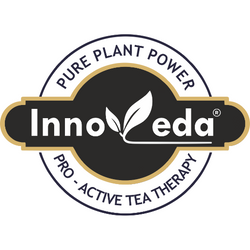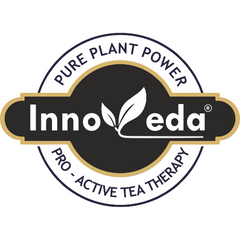All of Your Tea FAQs Answered!
Sip & Share: Join the Tea Lovers Conversation Today!
We love getting out in Tea community and talking with fellow tea-lovers. Not only do we enjoy sharing tea knowledge, but we like to learn what it is that most people know about tea. It's easy to forget that every varietal of green tea isn't common knowledge when you're surrounded by tea all day! We've compiled some of the FAQ's we're asked most, and maybe some of them are questions you've had, too!
Tea is both the product of the Camellia sinensis evergreen shrub and the beverage made from the leaves, buds and twigs. All teas are made from this plant, regardless of the type or "color." Black, green, white, oolong and pu-erh teas are all the same plant. What makes each of these teas differ from one another is the way in which they're picked and processed.
Almost All Herbal Teas are Caffeine-Free. The vast majority of herbal teas are caffeine-free, as they're made from infusing plants that don't have a caffeine content.
Chamomile technically is not tea. However, we colloquially refer to many botanical blends as herbal tea. Chamomile is a "tisane." Tisanes are made of caffeine-free flowers, fruits, leaves or spices.
Pu-erh is a fermented black tea. With earthy flavors, pu-erh can quickly become a tea novice's favorite tea type once they have a chance to try it. Pu-erh teas improve with age and can either be prepared from a loose-leaf pu-erh or by using a pu-erh cake.
White Tea is known for its light and delicate flavor, but did you know it also contains caffeine? Contrary to popular belief, white tea from the caffeinated Camellia sinensis plant does contain caffeine. Its short steep time may contribute to the misconception that it is caffeine-free. Enjoy a cup in the morning for a gentle energy boost.
we're not doctors or health experts, research has shown that Green Tea has numerous potential benefits. Based on historical beliefs, Green Tea may have weight loss benefits, earning it the nickname "Taiwanese Woman's Weight Loss tea." Incorporating Green Tea into your daily routine may potentially promote weight loss when consumed with meals.
Broadly all teas can be classified into four basic types: White, Oolong, Green and Black. They are all made from Camellia sinensis. The difference is in the manufacturing process and the amount of fermentation /oxidation required to make each type of tea.
Tea has been consumed for ages and has always been regarded as the safest beverage. Tea is the most popular beverage in the world because of its attractive aroma, exceptional taste, health promoting and pharmaceutical potential. Tea is the richest source of Antioxidants and contains polyphenols (specifically epigallocatechin gallate (EGCG), catechins, theaflavins, tannins, and flavonoids), these are known to have anti-inflammatory, analgesic, and anti-cancer health benefits.
Tea is known to take care of infections like, colds, flu and known to take care of headaches and muscular pains. Tea is a diuretic and produces both warmth and coolness in the body. The steam of hot tea moisturizes the nose, mouth, and throat and can help you clear your sinuses.
Research done in India, Europe, and other countries show that consumption of Drinking 3 or more servings of tea daily was associated with a reduced risk of heart disease, thought to be attributed to the high flavonoid content. One meta-analysis found that regular tea drinking reduced the risk of having a heart attack by 11%. Some observational studies have linked tea drinking with a lower risk of cancer – particularly colorectal cancer.
Any tea which is consumed without milk and sugar is Zero calories. It is the healthiest beverage after water.
Green tea is one richest natural source of antioxidants called polyphenols (specifically epigallocatechin gallate (EGCG), catechins, theaflavins, tannins, and flavonoids). These antioxidants are known t o have anti-inflammatory, analgesic and other health benefits. Green Tea is also known to aid weight loss, control glucose, and is also a photoprotective agent which protects the skin, prevents tooth decay and promotes bone density.
The tea plant accumulates fluoride from the soil, fluoride is known to protect teeth from dental caries. A cup of tea is a natural source of fluoride.
Antioxidants are molecules that inhibit oxidation of other molecules reducing free radical cell damage and leaving the body generally healthier.
Tea is a natural source of antioxidants called polyphenols (specifically epigallocatechin gallate (EGCG), catechins, theaflavins, tannins, and flavonoids).
No colour, preservatives, additives are added to Green Tea. The tea leaves are processed in a way to keep their original character, after brewing loose leaf tea, the leaf should be green.
Tea blending is the blending of different teas together to produce a final product. This occurs chiefly with black tea. Tea is blended so that customers get can get the same taste every time which means quality, character, and flavour of the tea is constant, this is despite some teas being seasonal or in short supply due to adverse weather conditions in one or other of the growing regions.
Blended tea means, that it more than two or three varieties of tea, these teas are blended carefully by blenders who have rich experience. Teas are selected from regions, grades, gardens so that there is consistency in the taste, colour, and quality.
It takes great skill to make a blend, years of practice goes into perfecting a blend. The one golden rule of blending is: Every blend must taste the same as the previous one, so a consumer will not be able to detect a difference in flavour from one purchase to the next.
This is a secret blend of various types of tea made by Master Tea Blenders, the secrets of which is only known to them and is a closely guarded.
Oolong Tea is partially fermented tea it is between a black tea and a green tea, it is made from the Camellia Sinensis plant. Oolong teas are highly valued for their rich flavour and its numerous health benefits. Oolong tea can enhance focus because of its caffeine content. Caffeine helps to stimulate the frontal cortex of the brain and this results in intense focus, improved memory function, and enhanced thinking abilities.
Matcha tea is a finely ground powder made from specially grown and processed green tea leaves. Unlike other teas, matcha is consumed in its entirety, making it one of the healthiest and most potent forms of tea available. If you want to learn more about matcha's ingredients and origin, check out our Ultimate Guide to Matcha Green Tea.
Matcha has a unique flavor profile that's often described as earthy, vegetal, and slightly sweet. The taste can vary depending on the grade of matcha and how it's prepared. If you're curious about the flavor of matcha, we recommend trying a high-quality ceremonial grade matcha first.
Yes, matcha tea is caffeinated, with about 25-35mg of caffeine per 1 gram serving. While some studies suggest that moderate caffeine consumption during pregnancy is safe, it's always best to consult your doctor or healthcare provider first.
Matcha and green tea come from the same plant, but they are prepared differently. Green tea is steeped in hot water, while matcha is whisked into hot water, using the whole plant that has been ground up. This creates a frothy and rich beverage. Matcha also contains more caffeine and antioxidants than green tea, making it a healthier and more potent option. You can learn more about the differences between matcha and green tea in our blog post here.
Matcha is a powerhouse when it comes to health benefits! It's loaded with antioxidants that can help prevent certain diseases and even boost brain function. But did you know that organic matcha is even more potent than non-organic matcha? That's because organic matcha is grown without the use of harmful pesticides or chemicals, which can reduce its nutritional value.
A matcha whisk and bowl are essential for traditional matcha tea preparation. If you're on the go, a matcha shaker is a handy alternative.
Now, onto the brewing process!
Heat water to just below boiling point (around 175-180°F).
Sift 1-2 teaspoons of matcha powder into your matcha bowl.
Pour in a small amount of hot water and use your matcha whisk to create a smooth paste.
Gradually add more hot water while whisking in a zigzag motion until you achieve a frothy, vibrant green matcha.
Enjoy!
Chai tea is an aromatic beverage that blends black tea with various herbs and spices. The most common spices used in chai are cinnamon, cardamom, ginger, clove, black pepper, and star anise.
The name "chai" is the Hindi language word for "tea." This Hindi word derives from the Chinese language term for tea known as chá (茶). As a term used primarily in the Indian subcontinent, the word "chai" is also popular in other Hindi-speaking communities located in Mauritius, Fiji, Suriname, Guyana, the Republic of Trinidad and Tobago, Nepal, the United Kingdom, and the United States.
Chai Tea
Chai tea is the traditional variation made of organic black tea and spices. The standard spice blend contains cinnamon, cardamom, and ginger. Cinnamon adds warm and sweet notes, cardamom contains earthy or smokey tones, and ginger brings zest to the tea. In addition to the standard flavors, other chai blends can include any range of spices, including nutmeg, cloves, star anise, black peppercorn, coriander, or fennel.
Masala Chai
Masala chai is a Hindi phrase that means "spiced tea." It refers to the process of blending black tea with a traditional blend of herbs and spices. The traditional method of making masala chai consisted of simmering a mixture of milk and water with tea leaves, sweeteners, and whole spices like cinnamon sticks and cloves. Today, you can purchase a masala chai blend to achieve the same fresh taste at home.
Chai Latte
Chai latte is an alternative to cafe latte, but instead of using coffee, it uses chai as its base. A chai latte combines tea with steamed milk, and some versions use milk alternatives like soy milk or almond milk. In addition to the hot beverage, you can also create an iced chai latte as a delicious summer treat.
Our Jasmine Pearls are sure to blow them away with their stunning fragrance, mellow coloring, and delicate finish. Here at Art of Tea, we only use organic green tea that is hand-picked at the source, subsequently dried, and then hand-rolled into small pearls, scented with fragrant blooming jasmine. And that’s it! But don’t let its simplicity fool you; Jasmine Pearls has a truly remarkable and complex flavor profile that is sure to delight all of the tea lovers in your life.
To maximize your exposure to catechins, and thus extract the greatest health benefits from your cup of tea, the whole buds and young leaves of most loose leaf teas are superior to broken leaf pieces, called fanning and dust, which are found in many tea bagged varieties.
Keep it in air tight containers. Keep away from light, moisture and heat. Avoid storing the tea in the cabinet right above or below the stove. Never put a wet or damp teaspoon to scoop tea from the container or zipper pouch.
Innoveda takes great pride in offering the highest quality full leaf teas in the market. Our Tea Masters have worked in the best estates producers of tea.
We are completely an online store with a wide variety of products to choose and purchase on our website.
Storage and Water Quality
Storing Your Tea
Proper tea storage helps to preserve the flavor and freshness of your tea long after production. While tea does not spoil, as with any consumable product, the sooner it is enjoyed the fresher and more potent it will be. Stored properly, unflavored teas can last up to 18 months. Flavored teas can last up to six months.
Innoveda recommends storing your tea in airtight containers to ensure longevity and keeping these containers away from heat, moisture and exposure to light. Teas are fragile and can be easily altered by neighboring spices and aromas, so be sure to store them in an area where the leaves cannot be permeated.
Water Quality
Always start with fresh cold water. Spring water or filtered water is recommended. Low mineral bottled water or distilled water can be used if water in your area is hard. It is best to avoid reheating the same batch of water. This will allow more control of the temperature and a more enhanced tasting experience when steeping your tea.
The Ultimate Guide to Tea Steeping Times
The Ultimate Guide to Tea Steeping Times
When it comes to savoring the perfect cup of tea, there's more to it than dunking a tea bag/tea leaves in boiling water. It's a cherished ritual, revered in the tea community as an art form. Steeping is the delicate balance between time, temperature, and technique — a ritual that can elevate your tea-drinking experience to new heights.
So, whether you're a seasoned tea connoisseur or embarking on your tea journey, mastering the art of steeping is paramount for crafting the ideal cup. In this guide, we'll delve into recommended steeping times for various types of tea, empowering you to brew with confidence and precision.
How Long to Steep White Tea
White tea, delicate and subtle, requires a gentle touch when it comes to steeping. If steeped for too long, you might end up with a bitter brew, so keep an eye on the clock! Here's a quick rundown:
Temperature: 160-185°F
Steep Time: 1-3 minutes
How Long to Steep Green Tea
The ever-popular elixir of antioxidants, green tea demands a bit of finesse to bring out its best qualities:
Temperature: 140-185°F
Steep Time: 1-3 minutes
How Long to Steep Black Tea
Bold and robust, black tea can withstand longer steeping times without becoming bitter. We recommend:
Temperature: 200-212°F
Steep Time: 3-5 minutes
How Long to Steep Darjeeling Tea
Known as the "Champagne of Teas," Darjeeling tea has a unique muscatel flavor. Give it the time it needs to steep, and you'll be rewarded with a cup as elegant as it is delicious. Here’s how:
Temperature: 185-195°F
Steep Time: 2-4 minutes
How Long to Steep Oolong Rolled Tea
Oolong tea offers a complex range of flavors, from floral and fruity to creamy and toasty, making it a true work of art. Here’s how to unlock its full potential:
Temperature: 185-205°F
Steep Time: 3-5 minutes
How Long to Steep Oolong Long Leaf Tea
Unlike Oolong rolled tea, Oolong long leaf tea requires a longer steeping time to infuse its flavors fully. We recommend:
Temperature: 185-205°F
Steep Time: 4-7 minutes
How Long to Steep Tisane Tea
Tisane, or herbal tea, is made from dried herbs, flowers, fruits, and spices. With its herbal infusion, this tea is like a soothing balm for the soul. Here’s how to brew it for maximum relaxation:
Temperature: 200°F
Steep Time: 5-7 minutes
How Long to Steep Raw Pu-erh Tea
Raw pu-erh tea, with its earthy flavor, is a favorite among connoisseurs. Keep a close eye on it as it steeps; even an extra minute can alter its flavor profile. Here's how to brew it for a truly authentic experience:
Temperature: 195-205°F
Steep Time: 2-4 minutes
How Long to Steep Half & Full Baked Pu-erh Tea
Half and full baked pu-erh tea, with its deep, rich flavor, is as satisfying as it is memorable. Here's how to brew it to make the most of it:
Temperature: 205-212°F
Steep Time: 3-5 minutes
Tea Brewing Chart
Still feeling a bit overwhelmed? Don't worry — we’ve got you covered. Here's a quick reference chart you can come back to for all your tea-steeping time needs:
1. White Tea: 1-3 mins
2. Green Tea: 2-3 mins
3. Black Tea: 3-5 mins
4. Darjeeling Tea: 3-4 mins
5. Oolong Rolled Tea: 4-6 mins
6. Oolong Long Leaf Tea: 5-7 mins
7. Tisane Tea: 5-7 mins
8. Raw Pu-erh Tea: 3-5 mins
9. Half & Full Baked Pu-erh Tea: 3-5 mins



